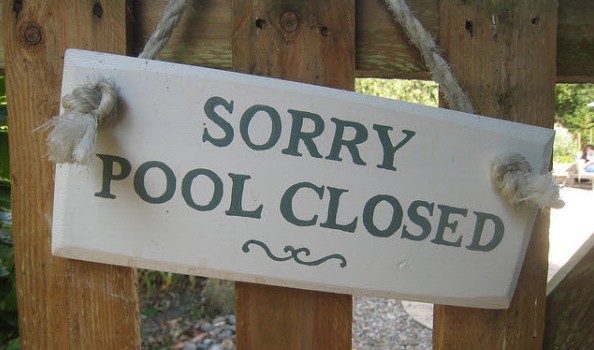
How often do you hear the question why do we need reserves? After all, this association is only a few years old?
It became very clear to me how important it is to put reserve funds aside from the moment an association is established when a few years ago, while working as a General Manager of a 1300 unit condominium conversion in Northern California, major repairs became necessary. The 32 buildings were approximately 25 years old. There was almost $2,000,000.00 in the reserve fund and the budget allowed for continual funding on a monthly basis. However, this funding did not begin until years after construction was completed when California law made it mandatory. The state law declared that an association must have reserve funds and that they are to be adequately funded.
The Problem Begins
Following is a brief 2 year history regarding this association: It began when 13 units were flooded out due to a sewer backup. A meeting was arranged for all of the displaced residents, the insurance adjuster, and a contractor, for 10:00 A.M. Saturday morning. As expected, the residents were quite upset and could not understand why they were not being allowed access to their own homes. The necessary treatment of black water, as prescribed by California health statutes, was explained to the residents along with the fact that they would not be able to return to their homes for six to eight weeks. As you can imagine, tempers flared once the Board, after reviewing the association's governing documents, informed the residents that they (the residents) would not only have to leave their homes, but also have to pay for their own lodging throughout the completion of the renovation process.
After a considerable amount of upset among the residents, the Board of Directors made the decision to advance the necessary lodging costs. The Board of Directors hoped that the insurance would cover the cost of remediation, the reconstruction and also the lodging. Funds to commence immediate repair were withdrawn from the Reserve Fund, which meant there would be less money available for any other repair or replacement of capital items in the near future.
A few months later, three units in a totally different area were flooded out with gray water. Immediately, the contractors who were still working on the original 13 units were called in to dry out the flooded areas and start additional remediation. The insurance company was once again contacted and the entire claim process began on these three additional units.
More Flooding, More Expenses...
Within six more weeks, a main water line burst and 44 units were flooded with approximately 12 of water in each unit. This included the last three units that were still displaced from the sewer backup. This time, fortunately, the main water lines actually belonged to the City and the City was called in to repair the line that ruptured. The city's insurance company, as well as the Association's insurance company, were contacted. The same contractor, who was still working on-site, as well as two other general contractors, were brought in to dry the units. This time all of the units were taken completely down to the framing, including removal of all cabinets, carpets and flooring. Once again there was concern as to whether or not some of the water was either gray or black. After testing, it was found that several of the 44 units were in fact, affected by gray water. These were not the same 3 units but several others.
Although the Association was fortunate to have adequate insurance to cover a major portion of each of these emergencies, a great deal of the expense was not covered and the Association's reserve funds declined rapidly.
Then Vandalism...
While doing my weekly walk through of the Association, which consisted of inspecting halls, balconies, walls, pools, landscaping, etc., holes were noted that appeared in the exterior stucco walls that seemed to be the result of vandalism. The holes showed some mysterious black substance inside the structure between the outside of the building and the inside of the wall. The walls also showed signs of apparent dry rot and deterioration. Additionally, reports from residents were coming into the office regarding some of the cantilevered balconies that were reportedly beginning to drop an inch or two.
The Board of Directors decided to bring in experts to study both the walls and the balconies, to make recommendations for repair, and to write the specifications from which bids could be obtained. At this point, the health and safety of those affected residents was of great concern.

Engineers Called in...
Bids were obtained from four different engineering/architectural companies to investigate these issues, as well as any related problems. A contract was awarded to the low bidder at $56,000. Arrangements were made for the engineers to have access to all 2nd and 3rd story balconies for inspection purposes. A detailed description of the condition of each balcony was noted, including a rating system to determine the priority in which these balconies would be repaired/replaced. Over a dozen balconies were immediately closed off from the units and residents were told not to use their balconies due to unsafe conditions.
The study revealed dry rot and possible mold behind the walls where the small holes had been made. It was thought that some of the water was from leaks in the roofs, bad drainage from the roofs, and holes in the walls where the local cable company had tacked cable going into the individual units. The exterior walls were covered with an elastomeric paint, which did not allow water to evaporate when it got behind stucco. Adding to the problems, the buildings were built in such a method that the weep holes had been covered.
Finally, Termites...
Because of all of the dampness, termites were having a picnic at the expense of the Association. A termite specialist was brought in and the treatment of all buildings began at a cost of just over $100,000. Tree roots were also coming up through the commodes, which created a need to remove commodes, flooring, and in some cases, required drilling of the foundations. The sewer laterals were found to contain roots and many of them could not be cleared - - so new lines were needed to replace the old ones.
When the Board finally received the completed report from the engineers/architects, it was found that the Association's property was in need of repairs totaling an estimated $18,000,000.00, none of which was covered by insurance.
The homeowners were very divided on how these expenses should be paid for perhaps a special assessment, maybe a building loan. Some even questioned whether such an enormous repair process was practical to undertake.
Had previous Boards of Directors had the foresight to know that something like this could happen, they might have begun putting reserve funds away much earlier over the course of the Association's existence. Many associations do not put reserve funds aside at all because, in many states, it is not mandatory. And in many other associations, the Boards do not plan ahead no long range planning whatsoever!
It took this association four long years before the repairs actually commenced. The lack of reserve funds, the work not beginning promptly, and the disclosure that needed to be made each time a unit sold adversely affected the value of the units and the reputation of the association as a whole.
The Moral
This true story illustrates that a Board should always be encouraged and advised to start a reserve account as quickly as possible, especially if the association contains amenities, private streets and gates, or is a condominium association where the association is responsible for walls and roofs. It is my hope that no manager will ever have to experience so many emergencies in so short a time. To help avoid some of the issues I have shared, my advice is simple: Plan ahead and fund reserves!
Related Articles Concerning Reserve Studies
- Reserve Studies-All You Need to Know!
- Why Have a Professional Reserve Study?
- The Great Debate: Should We Reserve for Siding?
- The Importance of Reserve Planning and Funding
- Reserve Now Or Pay Later
- Budget Preparation Tips
 Print
Print Email
Email







